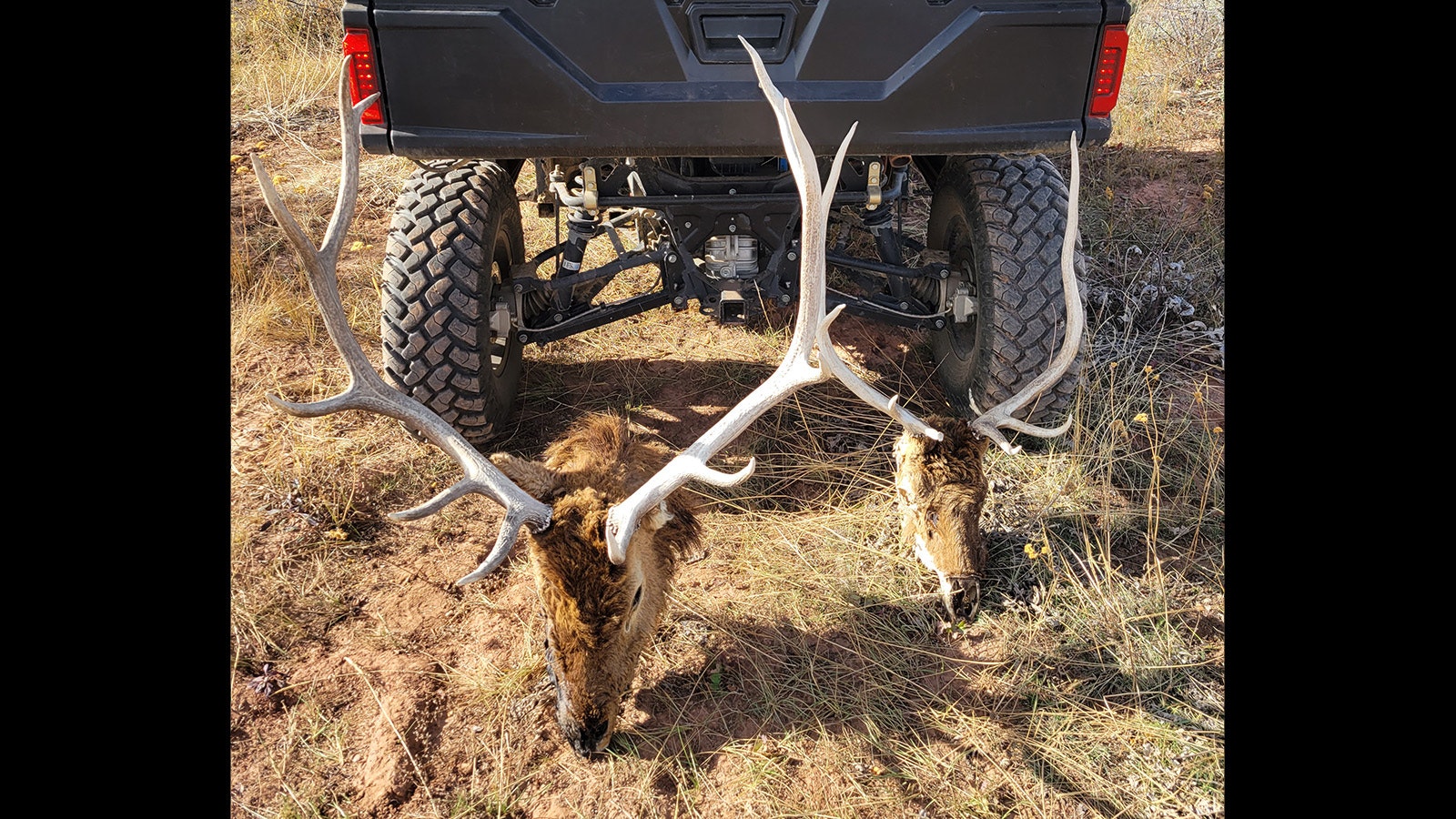With winterkill carcass scattered across the landscape, Wyoming hunters might have a crack at bringing home bonus trophies in the form of “dead heads,” or the intact heads and antlers of animals that froze and starved to death last winter.
But it’s not just a game of grab-and-go finders-keepers, a seasoned outdoorsman who picked up an extra pair of elk skulls during his recent hunting trip told Cowboy State Daily.
There’s a process that must be followed, including documenting where each dead head was found and reporting it to the Wyoming Game and Fish Department, said Vance McGahey, who lives outside Kemmerer.
“You need to make sure you take plenty of photos,” he said. “And if you have onX or a similar mapping app – which every hunter should have these days – you should create a pin location of where you found the dead head. And then by any means necessary, you should get ahold of your local game warden and send him the pinned location and the photos.”
People who want to keep the dead heads must also get an $8 Wyoming interstate game tag for each one.

‘They Were About 40 Yards Apart’
About 15 years ago, McGahey discovered a great elk hunting spot in Lincoln County. He’s bagged numerous animals there during subsequent hunting seasons. Those have included 11 bulls, the latest of which he shot during a hunting trip this week.
Finding old carcasses here and there isn’t anything new, he said. Those include elk, deer or antelope that die during winter, as a few always do. Or they might be animals that were shot by other hunters but escaped before they died.
But this year there’s a notable difference in the number of decaying big game carcasses, including the two additional bulls that he found.
“They were about 40 yards apart,” McGahey said. “We have come across dead heads before. In the cases where they were animals that hunters shot and couldn’t find, you could see where the bullet holes were, but that wasn’t the case with these.”
He surmised that the bulls were among that thousands of animals that died during the past winter that cut a swath of death across much of Wyoming.
McGahey said he got interstate game tags for both of the heads. He plans to take them to a friend who specializes in making European mounts, or mounts that include the animal’s cleaned and bleached skull with the antlers still attached.
“My wife is asking me where I was planning to put them, because my walls are already pretty full,” he said.
Many others have been finding winterkill dead heads as well, he added. Local Game and Fish agents told him that people have been reporting finding dead heads “pretty steadily since May.”
‘The Fawns Were Wiped Out’
McGahey added that he and his hunting partners also found some cow elk carcasses, which they suspect were winterkill as well.
“Their legs were still attached and intact, which means they probably weren’t shot by hunters” who would have taken the legs and quarters, he said.
As hard as the elk took it last winter, it was that much worse for deer and antelope, McGahey said.
At Fossil Butte, which is “about 7 miles as the crow flies” from his house, nearly 190 inches of snow was recorded, he said. That beat previous records going back to 1995 by about 40 inches.
Like many outdoors enthusiasts have noted, McGahey said he’s seen many fewer deer and antelope visible on the landscape this summer and fall in parts of Wyoming, and virtually no fawns.
“It’s not so much this winter that I’m worried about,” he said. “It’s the next three or four years. We’re going to have three or four years of really bad hunting. We’ve had herds of deer and antelope where all the fawns were just wiped out.”
McGahey said he bought a deer tag this year, but has opted to not hunt deer in his area. He also praised a program started by Zach Key of La Barge, “Let a Deer Walk,” whereby hunters could turn in their deer tags to enter prize drawings.
“I hope they continue it (Let a Deer Walk) for the next couple of years, to kind of help Game and Fish and help curb the number of people out hunting deer,” he said.
He added that he was “disappointed” that more effort didn’t go into feeding deer over the winter from wildlife conservation groups.
Three Winter Visitors
For his part, McGahey said he fed three cow elk that showed up on his property during the winter and had no place left to go because the snow was too deep.
He and his wife raise Scottish Highland cattle and pack goats on their property and gave the elk what hay they could spare.
“We don’t generally get elk up here at my house, but we did last year. And I kept them fed from January until about the end of April,” McGahey said.
As for the coming winter, he said there’s concern among locals that it could be another bad one.
“So far this fall, it’s been really weird, we haven’t had any snow at all. I think when winter finally hits, it’s going to hit us with full force,” he said.
Ranchers have been stocking up on extra hay, just in case, McGahey said – and he’s followed suit.
“I bought an extra 5 tons of hay, just in case the elk come back,” he said.
Mark Heinz can be reached at mark@cowboystatedaily.com.





